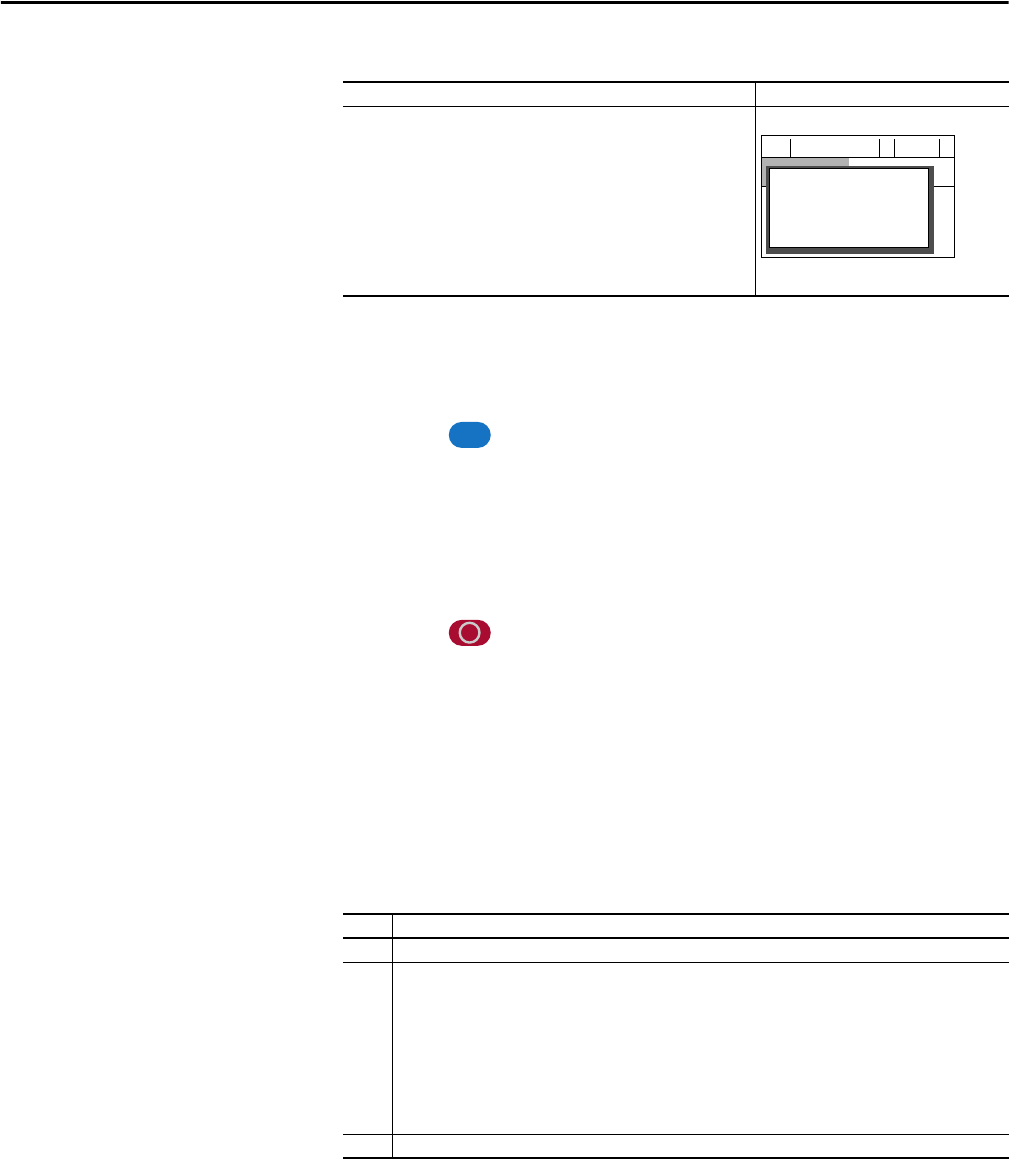Instruction Manual
Table Of Contents
- PowerFlex 700S High Performance AC Drive - Phase II Control, Programming Manual
- Summary of Changes
- Table of Contents
- Preface
- Chapter 1 - Drive Start-Up
- Chapter 2 - Programming and Parameters
- Chapter 3 - Troubleshooting
- Appendix A - Human Interface Module Overview
- Appendix B - Application Notes
- Appendix C - Control Block Diagrams
- Appendix D - PowerFlex 700S Permanent Magnet Motor Specifications
- Appendix E - ATEX Approved PowerFlex 700S, Phase II Drives in Group II Category (2) Applications with ATEX Approved Motors
- Appendix F - History of Changes
- Index
- Back Cover

144 Rockwell Automation Publication 20D-PM001C-EN-P - July 2013
Chapter 3 Troubleshooting
HIM Indication of a Fault
The HIM also provides visual notification of a fault.
Manually Clearing Faults
Follow the steps to manually clear a fault:
1. Press (Esc) on the HIM to acknowledge the fault.
The fault information will be removed so that you can use the HIM.
2. Address the condition that caused the fault.
The cause must be corrected before the fault can be cleared.
3. After corrective action has been taken, clear the fault using one of the
methods:
• Press (Stop) on the HIM
• Cycle drive power
• Select “Clear Faults” from the Diagnostics > Faults menu on the HIM
Fault and Alarm Types
A fault is a condition that stops the drive. An alarm is a condition that, if left
untreated, may stop the drive. There are three configuration types for indicating a
fault and/or alarm.
Table 5 - Fault Type Descriptions
Condition Display
Drive is indicating a fault.
The LCD HIM immediately reports the fault condition by displaying the
following:
• “Faulted” appears in the status line
• Fault number
• Fault name
• Time that has passed since the fault occurred
Press Esc to regain control of the HIM
F-> Faulted Auto
0.0
Hz
Main Menu:
Diagnostics
Parameter
— Fault — F24
DC Bus Overvolt
Time since Fault
00:23:52
Esc
Type Fault Description
1 Non-Configurable Fault The cause of the fault must be corrected before the fault can be cleared.
2 User Configurable Programming and commissioning personnel can configure the drive’s response to
the exception events. Response include:
• Ignore
• Alarm
• Fault Coast Stop
• Fault Ramp Stop
• Fault Current Limit Stop
3 Non-Configurable Alarm Can only be configured as a alarm.










